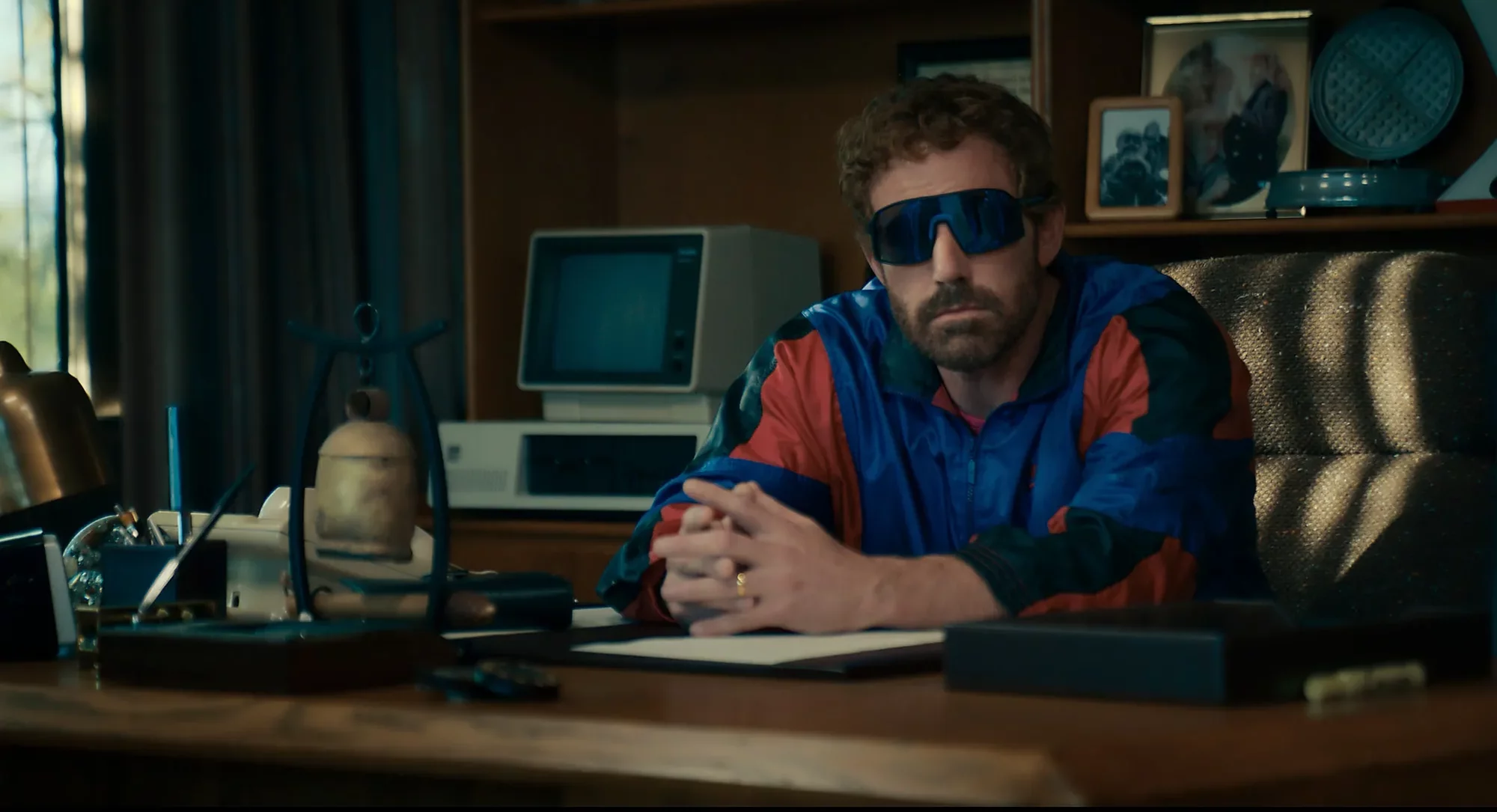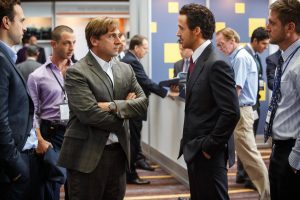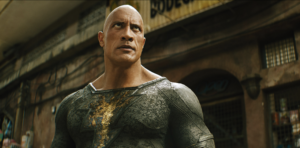If you were only going off sneaker culture, you’d think we were back in the ’80s. Countless shoes that debuted in that decade have been rereleased and seen huge success recently, from Nike Dunks to New Balance 550s to Jordan 4s. Even the Air Force 1, a sneaker you can probably find on every other college student these days, debuted in the ’80s. In my own closet there sits a pair of Nike Terminators, designed in 1985 as the first shoe specifically produced for a basketball team (that team being the Georgetown Hoyas). The ’80s are everywhere, and even Ben Affleck knows it.
His new movie, AIR, is a reverent retelling of the 1984 kickoff of the greatest sneaker brand of all time: Air Jordan. The film, shot with the precision and smoothness of Michael Jordan’s own jumper, masterfully honors both the shoe line and the player that we’ve exalted in the 40 years since their debuts.
Jordan himself is not cast in AIR, and perhaps that’s for the best. He’s only shot from behind, and mostly referred to in conversations between executives and his family, an approach which lends itself to Affleck’s clear goal of mythologizing the man.
Affleck directs and stars as Nike founder Phil Knight, and brings Matt Damon into the fold as talent scout Sonny Vaccaro. As a Bostonian sneakerhead, this was my second clue that AIR was the perfect movie for me. The third came around 10 minutes in, when Vaccaro chats with a cashier about the recent NBA Draft. The cashier, who’s glad Portland had passed on Jordan with the second pick, says he’s only so well-known because of “that one shot” in the 1982 NCAA championship. In my crowded D.C. theater, that line drew a chorus of “mhm”s—Jordan hit that shot over Georgetown to win the title.
As if rewarding us for our recognition of the iconic Georgetown-UNC matchup, AIR then takes us to Vaccaro’s living room TV, where he inserts a VHS tape of the game and studies the shot. As he hits rewind and leans in, the camera closes in tight on his face, focusing on Vaccaro’s big realization and allowing the audience to re-experience the awe of watching a legend in the making for the first time. Vaccaro watches the shot at home, then in the office of chairman Rob Strasser (Jason Bateman), and again in Knight’s office—a set totally littered with sneakerhead easter eggs, like pairs of Nike Cortezes on the shelves.
It’s Jordan’s confidence, Vaccaro explains, the way he holds himself despite being tasked with hitting the biggest shot in NCAA basketball as a freshman, that makes him truly special. Vaccaro knows he’ll be big, and he wants Nike to pursue him with everything they have. Unlike the well-established Adidas and Converse brands, Nike did not already have a marquee athlete, allowing them to center up-and-comer Jordan in their lineup. The decision spawned the tagline, “he doesn’t wear the shoe, he is the shoe.”
Vaccaro is yelled out of the room the first few times he pitches it. Other scouts like other basketball players better, or expect Jordan to go with Adidas, whose shoes he reportedly preferred in college. Throughout the film, the script deftly plays with what the audience knows, as Vaccaro grows increasingly alienated from his colleagues—he and the viewers are the only ones who can see what a fruitful partnership the Jordan deal will become.
The first draft design of Jordan’s signature shoe, the Air Ship, runs up against the NBA’s rule at the time demanding all game shoes be at least 51% white. Peter Moore (Matthew Maher), the shoe’s designer, says he’s been dreaming about what he could do if he didn’t have to follow that rule, and Strasser replies: “What if we just pay the fines? And make a commercial out of it.”
The Air Jordan 1, a bestseller then and a pantheonic icon now, has an immensely rich history to play with, and AIR makes perfect use of it. Beginning with a grainy montage of significant moments from basketball and pop culture in the ’80s and ending with Moore drawing the iconic Jumpman logo, which debuted on the Jordan 3, the movie assumes in its viewers a cache of sneakerhead knowledge. In my theater, at least, the gamble paid off, as the crowd gave dozens of knowing chuckles throughout the film.
The movie built up to the reveal of the Jordan 1 prototype surprisingly well given that most already know what it looks like. In the pitch meeting to Jordan and his family, when the box is unveiled with one red, white, and black sneaker, the theater gasped, both with familiar love and wonder. This is a shoe that, when it was rereleased last year (and tweaked to look 40 years old), I convinced several friends to enter the raffle on my behalf to ensure I secured a pair. How could I not gape at the very first ever made being cast onto the silver screen?
Of course, the movie has its limitations. It struggled at times with low stakes, given the known ending and the fact that Nike would remain a successful running shoe company even if they hadn’t signed Jordan. This is where his mother, Deloris Jordan, comes in to steal the show.
Portrayed stirringly as ever by Viola Davis, Deloris handles everything for Michael. Davis was Michael Jordan’s personal request for casting his mother, and the screenplay centers her in a way both befitting the actress and for Deloris Jordan herself. In AIR, she’s firm but warm with Vaccaro, certain of her son’s greatness from the beginning and essential in negotiating his revolutionary deal.
Every viewer will enter the theater with a different level of knowledge about His Airness and the story of the Jordan brand. For those who know little, it’s an entertaining story with hard-to-beat performances across the board. For those who know a lot, it’s an easter egg hunt and an admirably comprehensive dramatization. But for all, it’s bound to make you walk out of the theater smiling—and maybe thinking about buying a new pair of shoes.





